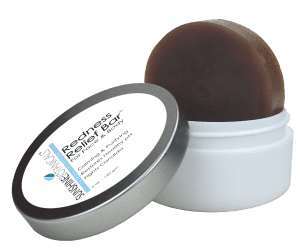Sun Damage, Melasma and Skin Discoloration: A Rising Epidemic
The changes in skin texture, color, and appearance brought about by aging are all too familiar: wrinkles, patches of hyperpigmentation in places and loss of pigment in others, areas of purpura caused by broken blood vessels, keratoses, broken capillaries, and skin tags. These changes are associated with changes in skin function. Skin elasticity decreases, the protective barrier function becomes compromised, the skin builds layers of dead skin cells, loses its healthy glow, and pores enlarge. To top it all off, pigmentation disorders and Melasma increase.
Understanding Melasma

- Avoidance of UV exposure;
- Topical regulation of melanocytic activity;
- Selective light-based and laser-based photothermolysis of melanocytes or melanin; and
- Chemical or mechanical exfoliation.
Before starting any protocol to lighten the skin, it is important to understand the primary causes of most hyperpigmentation: unprotected sun exposure and glycation. What is glycation, you ask? Glycation is a physiological reaction in the body when simple sugar molecules such as fructose or glucose become attached to proteins or lipid fats without the moderation of an enzyme, which results in rogue formation molecules known as advanced glycation end products (AGEs). This leads to several health problems, including skin discoloration and inflammation.
Much of what is known about glycation’s ill effects come from diabetes research: The connective-tissue damage and chronic inflammation resulting from diabetics’ sustained high blood sugar can lead to debilitating conditions, such as cataracts, Alzheimer’s, vascular tightening, and diseases of the pancreas and liver. Simply put – SUGAR is enemy #1!
The following ingredients are healthy AND very effective alternatives to synthetic hydroquinone. Be sure to look for them on your product labels:

Niacinamide: Niacinamide is a biologically active form of niacin (vitamin B3) found widely in many root vegetables and yeasts. Niacinamide has several proposed medicinal applications in the skin, including anti-inflammation, photo-immunosuppression prevention, and increased intercellular lipid synthesis. This too can be found in our Bio-Peptide Brightening Serum.
Vitamin C: Vitamin C, also known as magnesium ascorbyl phosphate, ascorbic acid, ascorbyl glucosamine, l-ascorbic acid, and ascorbyl palmitate, is a common ingredient found in many botanical skin lighteners that is also a first-class antioxidant. Although studies have indicated that vitamin C does inhibit melanin production at concentrations above five percent, most skincare products available over-the-counter are not quite this potent. For this reason, vitamin C is used in conjunction with other treatments for a skin-lightening boost. Another gem found in our Bio-Peptide Brightening Serum.
Arbutin: Derived from the leaves of blueberry, bearberry, cranberry, mulberry shrubs, or a specific genus of pear, arbutin contains the natural form of hydroquinone, which will inhibit the production of melanin by the skin.
Azelaic acid: Most commonly, this ingredient is used to treat acne, but recent studies have shown azelaic acid beneficial for the treatment of skin discolorations, as well. Azelaic acid is made from the grains of wheat, rye, or barley and is usually found in creams at a concentration of 20 percent. Studies have shown it to be effective in treating melasma and inhibiting melanin production.
Bilberry extract: A relative of blueberries, bilberry fruit contains tannins with natural astringent and anti-inflammatory properties. Traditionally used by herbalists to treat blood pressure and prevent the formation of blood clots, bilberry is also an excellent antioxidant. Recently, bilberry has proven useful for treating hyperpigmentation and sun damage due to its chemical composition, including botanical hydroquinone, vitamin A, and vitamin C.
Kojic acid: Derived from a fungus, kojic acid also similarly inhibits melanin production to hydroquinone. This ingredient oxidizes quickly and will turn brown if left exposed to air, so check the expiration date carefully and be sure to store it in a cool, dark place, away from heat or light.
Lemon: Used to lighten hair, bleach freckles, and whiten faded or yellowed cotton clothing, lemon is a valuable home remedy women have been turning to for years. Lemons help brighten and clarify the skin with citric acid and vitamin C and may be applied topically to the skin with a cotton swab, straight from the freshly sliced fruit. However, fresh lemon juice can be drying to the skin, so be certain to apply moisturizer after treatment to keep the skin hydrated.

Malic Acid: An alpha hydroxy acid derived exclusively from apples, malic acid has protective and moisturizing qualities, making it ideal for use on sensitive skin or those suffering from Rosacea or other skin concerns. Malic Acid can be found in our Cleanse and Clear.
If you are serious about fading dark spots or uneven skin tone, you must be committed to the process—it takes time, but the results are totally worth it. Results can take anywhere from one to three months, and you must wear sunblock daily for optimal results. Any unprotected UV exposure can potentially cause further hyperpigmentation and must be guarded against carefully.
Sunshine Botanicals has an excellent product to help with Melasma. Let us know how we can support you!
My passion is your solution!
Below is a testimony from one of our own, Kim Adams!

